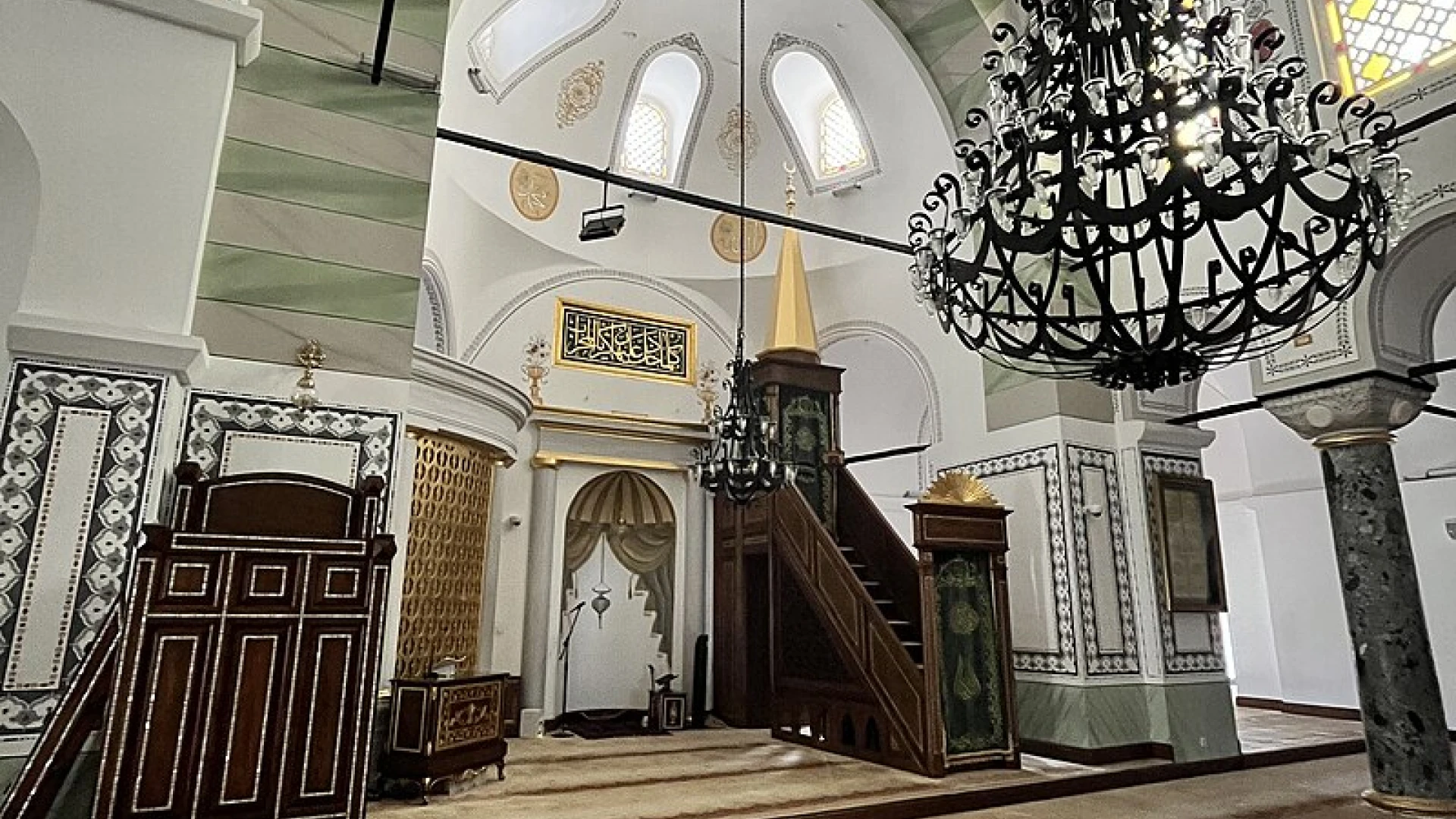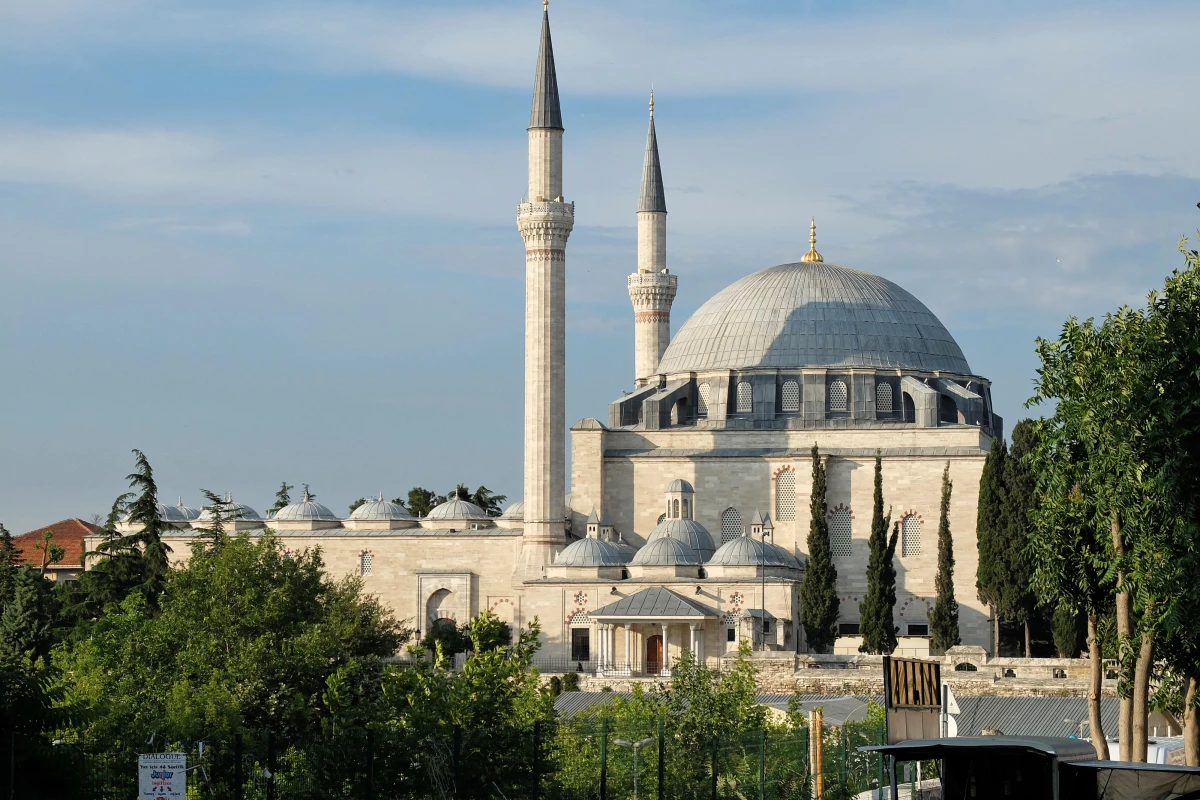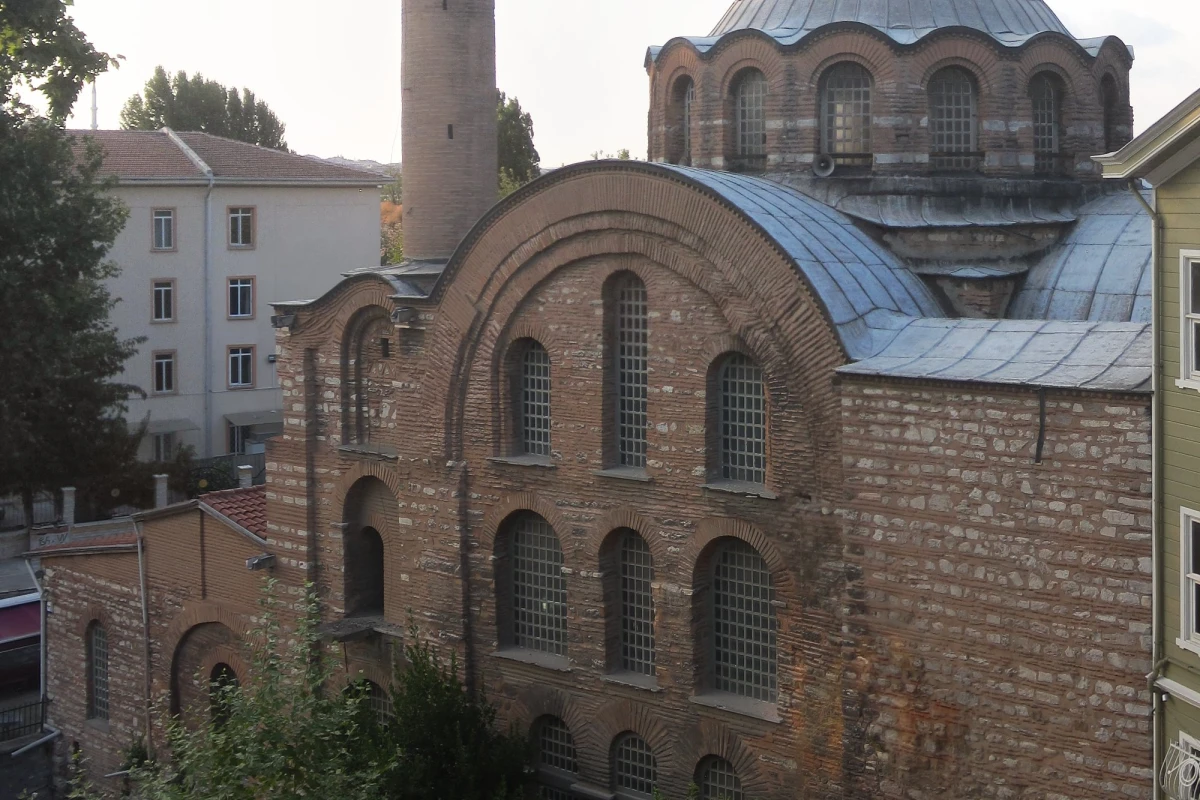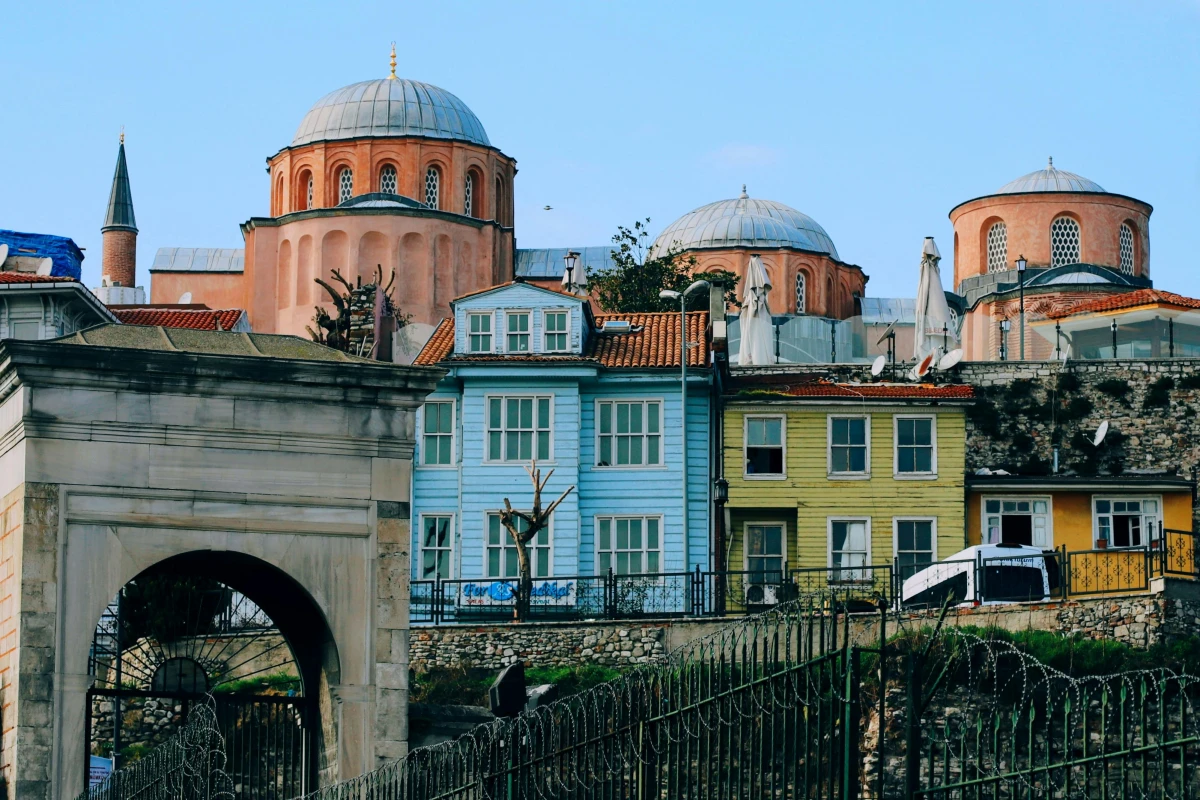A peaceful corner in Istanbul filled with centuries of stories.
From a Byzantine Church to a Place of Pilgrimage
In the heart of Istanbul’s historic peninsula, beyond the bustling tourist routes, stands Kocamustafapaşa Mosque, once the Byzantine Church of St. Andrew in Krisei. With layers of spiritual, political, and architectural transformation spanning over 1,500 years, this quiet yet commanding structure offers a rare opportunity to walk through centuries of living history.
In the 13th century, Princess Theodora, a member of the Byzantine royal family, rebuilt it after the city was damaged during the Fourth Crusade. Inside the church, the body of Saint Andrew of Crete, a religious figure who stood against icon destruction (Iconoclasm), was buried. This turned the church into a pilgrimage site, attracting visitors from across the empire who came to pray at his tomb.
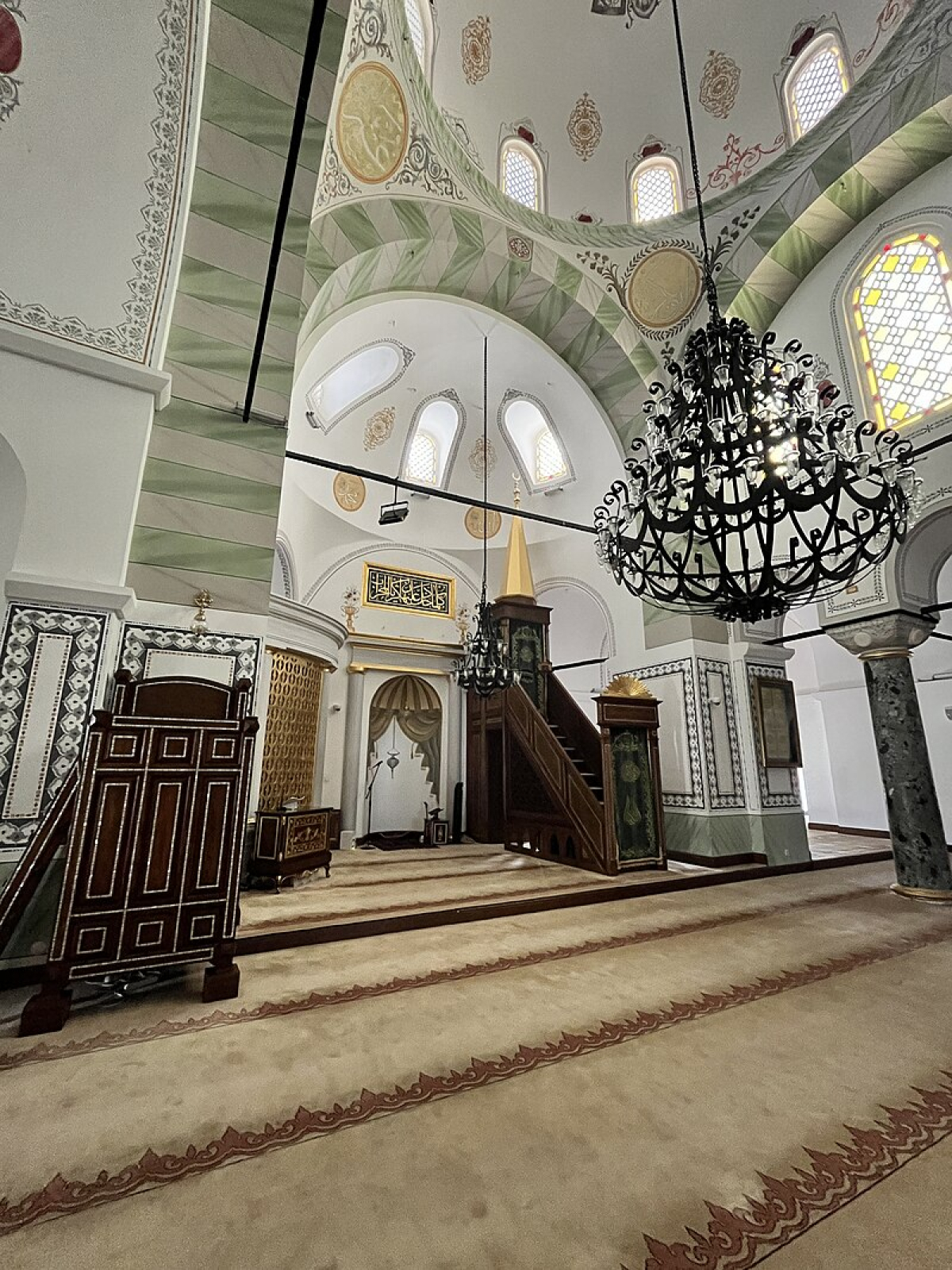
Interior of the mosque (Photo by Sadrettin, licensed under CC BY-SA 4.0.)
A New Era: The Mosque of Kocamustafapaşa Mosque
After the conquest of Constantinople, many churches were gradually integrated into the Islamic urban fabric. Under Sultan Bayezid II in the 15th century, this church was converted into a mosque by Koca Mustafa Paşa, a vizier whose political fate was as dramatic as the building he repurposed. His eventual execution did not erase his legacy: the mosque, madrasa, and surrounding neighborhood still bear his name.
This transformation brought architectural and spiritual changes to the building. The Ottomans redesigned the interior to accommodate the qibla for Islamic worship. Elements like the original three apses were masked behind Ottoman-era façades, while the dome was reconstructed to reflect early classical mosque design. The building’s evolution makes it one of the earliest models of the Beyazıt-style mosques, predating even the Beyazıt Mosque itself.
A Sufi Heartbeat: The Sümbül Efendi Tekke
By the 16th century, Kocamustafapaşa Mosque had become more than a place of prayer; it was the spiritual center of the Sünbüliyye Sufi order, a branch of the Halveti path. The tomb of Sümbül Efendi, one of Istanbul’s most venerated mystics, lies within the mosque’s courtyard. His presence continues to draw visitors seeking blessings, peace, and a quiet refuge from the city’s frenzy.
The tekke flourished through the Ottoman centuries, even surviving symbolic demolitions under Yavuz Sultan Selim with only minor damage. Its tradition of mystical hospitality lives on in the form of tombs, fountains, and libraries scattered throughout the complex.
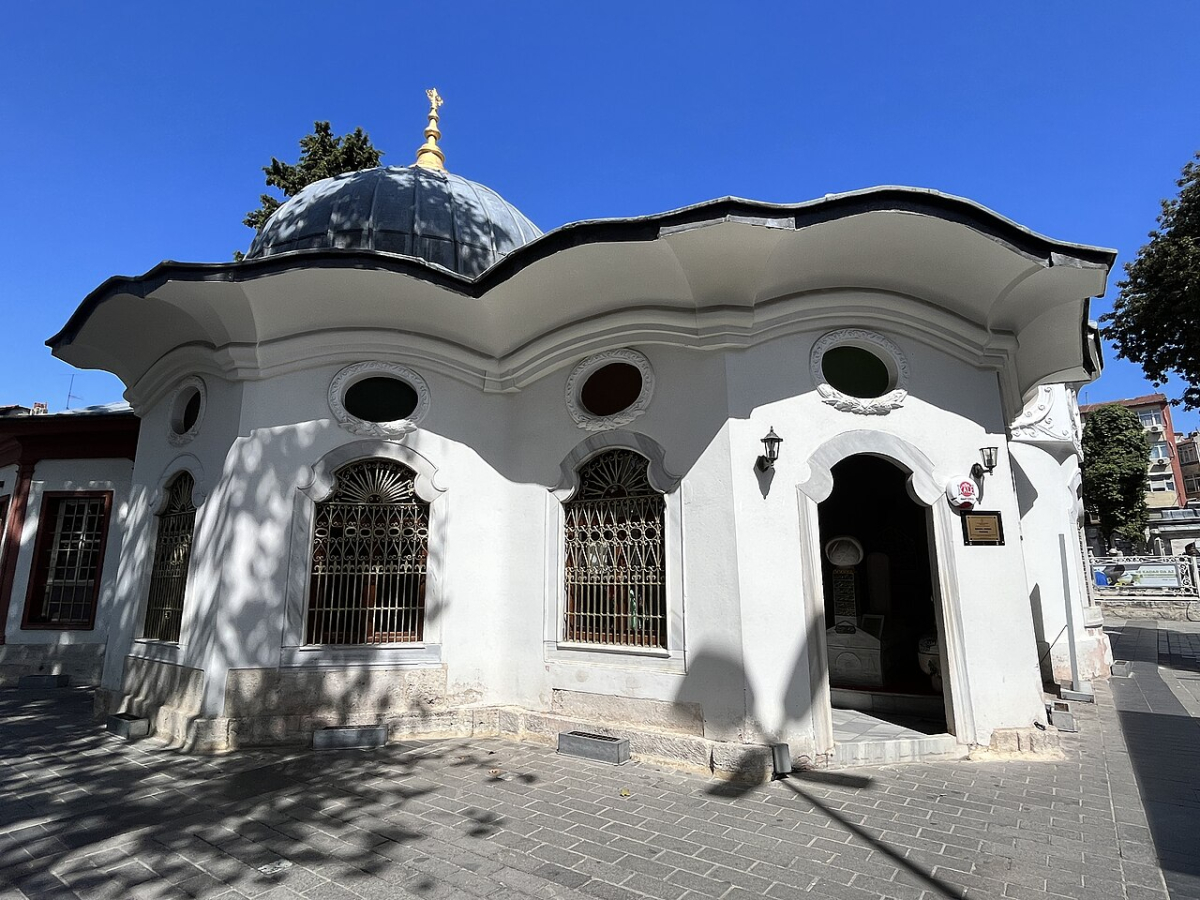
The tomb (türbe) of Sümbül Efendi (Photo by Sadrettin, licensed under CC BY-SA 4.0.)
An Enduring Urban Anchor
Beyond its architectural and spiritual dimensions, Kocamustafapaşa Mosque became a magnet for civic life. The surrounding külliye once included a medrese, soup kitchen (imaret), and extensive waqf properties stretching across the Balkans and Anatolia. These endowments sustained the mosque’s operations and nurtured its local community, shaping a distinctly Ottoman neighborhood identity still traceable today.
Writers like Yahya Kemal Beyatlı and Ahmet Hamdi Tanpınar often referenced the area in their reflections on old Istanbul, drawn to its layered sense of time and space. Even in modernity, the streets around the mosque offer glimpses of an Istanbul still pulsing with memory: open courtyards, crumbling tombstones, and the scent of jasmine from nearby gardens.
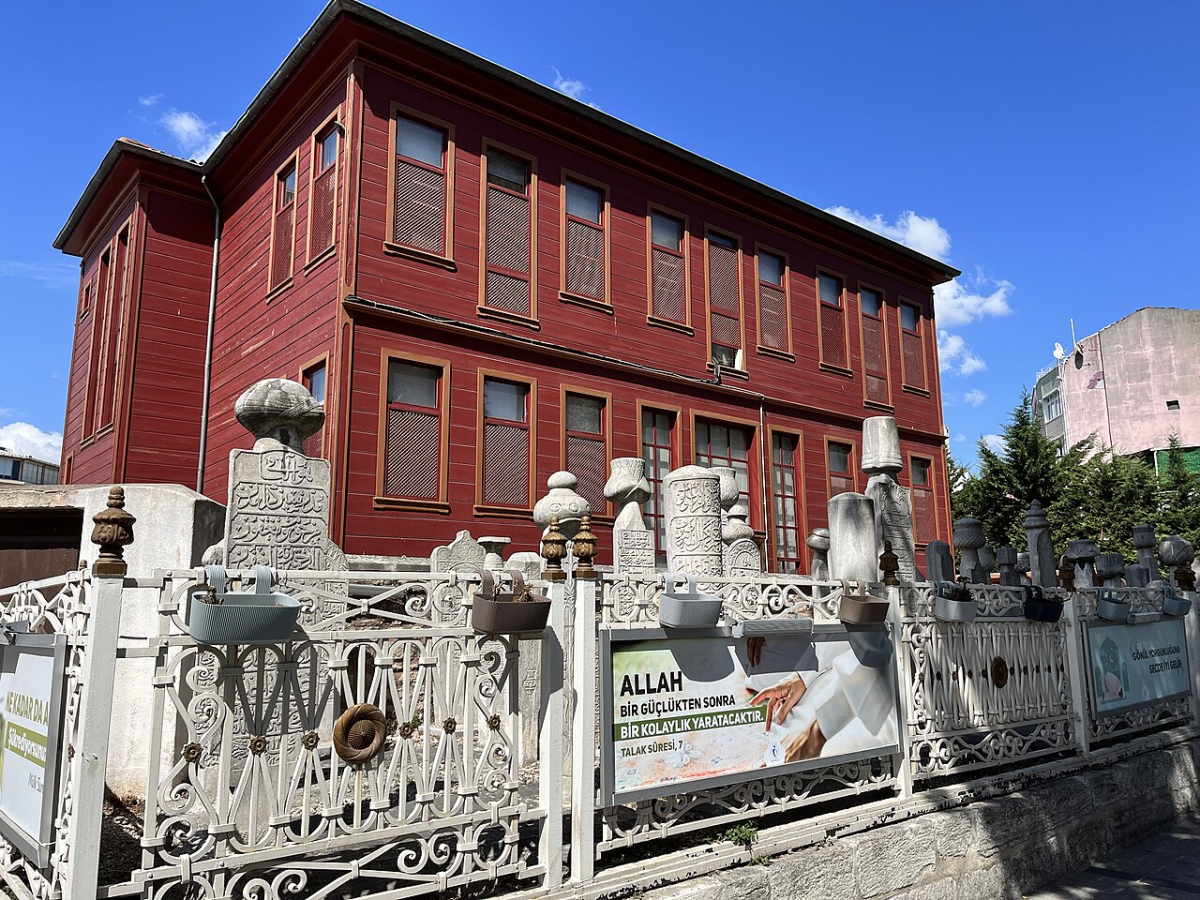
The Mansion of Sümbül Efendi (Photo by Sadrettin, licensed under CC BY-SA 4.0.)
Architectural Character and Hidden Grace
While the mosque’s Byzantine bones are largely concealed, a trained eye will spot the hints, like the half-domed apse on the eastern wall or the repurposed marble fragments embedded in the courtyard. The minaret, delicately decorated with stalactite-carved capitals and slender balustrades, is one of the most elegant in Istanbul, bearing aesthetic echoes of Edirne and Bursa.
A separate türbe (mausoleum) built for Koca Mustafa Paşa lies nearby, while a rare sebil (public fountain) designed in a columnar form by Beşir Ağa in the 18th century stands in the courtyard. The medrese once boasted forty domed cells, a remarkable feat in Ottoman educational architecture. Many of these structures are lost, but the urban logic they created still defines the soul of the quarter.
🕒 Plan Your Visit
| 📍 Location | Kocamustafapaşa, Fatih, Istanbul (click on the table to acess the location) |
| 🚇 How to Get There | T5 Tram Kocamustafapaşa Station (walk 15 minutes) |
| 🕰 Hours | Daily, except during prayer times |
| 💸 Entrance Fee | Free |
| 🧕 What to Bring | Modest clothes, headscarf (for women), camera, water |
Why It’s Worth Visiting
Kocamustafapaşa Mosque is more than just an old building. It’s a peaceful place that has welcomed saints, scholars, and everyday people for over a thousand years. From Byzantine times to the Ottoman era, it has always been a spiritual home to many.
If you want to see a different side of Istanbul—one that feels real, quiet, and full of meaning—put this mosque on your list. It’s a hidden gem that reveals just how deep Istanbul’s roots go.
References
Baltacı, Cahid. XV-XVI. Asırlarda Osmanlı Medreseleri. İstanbul: 1976.
Eyice, Semavi. "KOCA MUSTAFA PAŞA CAMİİ ve KÜLLİYESİ." Türkiye Diyanet Vakfı İslâm Ansiklopedisi, vol. 26, Türkiye Diyanet Vakfı, 2002, pp. 133–136.
TDV. “Kocamustafapaşa Camii ve Külliyesi.” İstanbul Vakıfları Tahrir Defteri, 953 (1546).
Van Millingen, Alexander. Byzantine Churches in Constantinople: Their History and Architecture. London: Macmillan, 1912.
Yazıcı, Tahsin. “Fetihten Sonra İstanbul'da İlk Halvetî Şeyhleri.” İstanbul Enstitüsü Dergisi, no. 2, 1956, pp. 87–113.
Cover photo: Sümbül Efendi Mosque. © Sadrettin, 10 September 2023, 13:57. [Own work], licensed under CC BY-SA 4.0.


